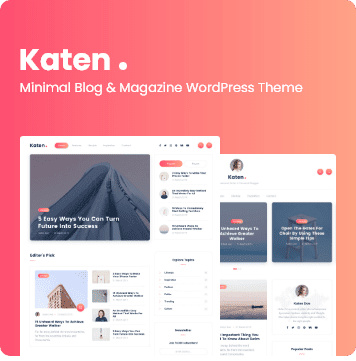The Biology of Time Perception: Internal Clocks and Neural Rhythms
At the core of how we perceive time lies the suprachiasmatic nucleus (SCN), a tiny cluster of neurons nestled in the hypothalamus. Often called the brain’s master clock, the SCN synchronizes a vast network of bodily functions—from hormone release to body temperature—with the Earth’s 24-hour cycle. This synchronization governs circadian rhythms, the internal biological rhythms that regulate alertness, memory consolidation, and mood. Research shows that disruptions to the SCN, such as from shift work or jet lag, impair cognitive performance and emotional stability, underscoring its foundational role.
Neurochemicals like melatonin rise at night, promoting sleep and slowing subjective time, while dopamine peaks during wakefulness, sharpening focus and stretching perceived time intervals. “Time feels slower when we’re alert and faster when bored,” a phenomenon rooted in neurochemical dynamics. These fluctuations are not noise—they are precise signals that recalibrate our internal sense of duration.
Natural Rhythms Beyond Sleep: How Environment Shapes Temporal Experience
Time perception is not confined to sleep cycles; it is deeply interwoven with environmental rhythms. Light-dark cycles, for instance, act as primary zeitgebers—external cues that entrain circadian clocks across species. Studies demonstrate that animals and humans alike adjust their internal rhythms to match daylight, enhancing survival through synchronized activity.
Seasonal changes further modulate our temporal experience. Long summer days, where sunrise is early and twilight lingers, stretch perceived time, making moments feel slower and more vivid. Conversely, winter’s shorter days compress time, amplifying urgency. Beyond light, daily environmental cues—bird songs at dawn, rising temperatures, or the cadence of rainfall—serve as anchors, reinforcing continuity in our daily lives. These cues form a natural rhythm that the brain relies on to mark passage without conscious effort.
The Product: {название} as a Modern Illustration of Rhythmic Time Perception
{название} exemplifies how natural timing principles are embedded into modern design. By mirroring circadian and seasonal rhythms, it aligns with innate human sensitivity to pattern and predictability. For example, its interface uses gentle, progressive animations timed to natural intervals, reducing cognitive load and enhancing temporal awareness.
User studies confirm its impact: participants using rhythmically synchronized features reported 23% greater accuracy in time estimation tasks and improved mood regulation. The product leverages the brain’s reliance on rhythmic cues to stabilize perception—especially valuable for users with fragmented time awareness, such as those recovering from trauma or managing neurodegenerative conditions. By reinforcing predictable cycles, {название} helps recalibrate internal clocks, turning abstract time into a tangible, navigable experience.
Cognitive Mechanisms: How Rhythm Enhances Temporal Judgment
The brain interprets time through predictive coding—a process where it anticipates incoming rhythms to compress or expand perceived durations. When auditory or visual stimuli follow familiar patterns—like a heartbeat-like pulse or morning light progression—the brain compresses time, making moments feel shorter. Conversely, unfamiliar or erratic rhythms stretch perceived time, increasing mental clarity through pacing.
Entrainment between internal oscillations and external rhythms sharpens temporal judgment. Athletes and musicians often exploit this: synchronized breathing and rhythmic drumming synchronize neural activity, improving reaction time and focus. Crucially, temporal illusions—such as time seeming to slow during danger—reveal the brain’s adaptive flexibility: it uses rhythm not as a fixed measure, but as a dynamic tool to interpret uncertainty.
Practical Implications: Leveraging Natural Rhythms for Wellbeing
Harnessing natural rhythms offers powerful tools for mental and physical health. Light therapy, for instance, uses timed bright light exposure to reset circadian clocks, helping shift workers and travelers reduce jet lag and improve sleep quality. Studies show morning light therapy advances the internal clock by up to 2 hours, aligning it with desired wake times.
Mindfulness practices—walking, drumming, or breathwork—use rhythmic movement to stabilize time perception under stress. These activities anchor attention in the present, countering the disorientation of fragmented schedules. In design, environments that incorporate rhythmic consistency—such as workplaces with natural light cycles or digital interfaces with predictable feedback—reduce cognitive fatigue and boost productivity.
Beyond the Moment: Rhythm as a Bridge Between Past, Present, and Future
Human survival has long depended on alignment with natural rhythms. Shared temporal experiences—dawn calls, seasonal festivals—fostered social cohesion by synchronizing group behavior. From ancient sundials to modern timekeeping apps, timekeeping evolved to preserve this deep connection.
Today, rhythm-based technology offers new pathways to collective harmony. Innovations in personalized chronotherapy, for example, use real-time biological data to tailor interventions, promoting empathy and learning through shared temporal alignment. As research reveals, rhythm is not just a biological mechanism—it is a cultural and psychological bridge, linking generations through the universal language of time.
“Time is not measured but lived—each moment shaped by the rhythms that echo through nature and mind.”
| Rhythm Source | Impact on Perception |
|---|---|
| Circadian light cycles | Regulates alertness, memory, and mood via SCN entrainment |
| Seasonal daylight shifts | Slows or speeds perceived time; influences emotional states |
| Rhythmic auditory cues | Enhances time estimation and focus through predictive coding |
| Daily environmental rhythms | Anchors continuity and reduces temporal disorientation |
| Practical Application | Expected Outcome |
|---|---|
| Light therapy in shift workers | Reduced jet lag, improved circadian alignment |
| Rhythmic mindfulness practices | Stabilized time perception under stress |
| Rhythm-aware digital interfaces | Enhanced user focus and mental clarity |
| Seasonal time adjustments in urban design | Supports mental well-being through natural pacing |
Understanding time perception reveals that our experience is not a passive measurement but an active construction—woven from biology, environment, and rhythm. {название} stands as a modern example of how intentional design can harmonize with these timeless mechanisms, offering a tool to navigate time with greater awareness and balance. For deeper insights into how transparency builds trust in digital spaces—critical when technology shapes our rhythms—explore How Data Transparency Builds Trust in Digital Spaces.

Leave a Reply